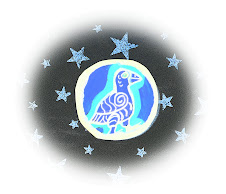Shrouded in Mystery: The Female Hooded Deity
According to the Roman poet Juvenal who wrote around 100 AD, the hood or cucullus was a Celtic invention. It was primarily worn by people close to the land or those routinely exposed to the elements, such as farm laborers, travelers or shepherds. It had a practical funnel-shape, which could be easily pulled over the head. But it could also be worn separately or in conjunction with a cape or tunic. Besides having these utilitarian functions, the cucullus could also conceal the identity of the wearer. The most basic information about a person was wrapped in mystery so-to-speak because it was difficult to ascertain the gender, age, occupation or intent of such a cloaked figure.
In areas of Europe occupied by both Romans and Celts, archaeologists have found numerous representations of a hooded deity, which they refer to as genius cucullatus. Some of these figures are considered to be female and are believed to have some connection with earth goddesses. They often carry eggs or other fertility symbols while others carry parchments or scrolls, possibly signifying the wisdom and power associated with healing. It is thus believed these cult figures were revered for their control over prosperity, health and fertility. In 1931 two altars were found in the village of Wabelsdorf, Austria with the inscription “genio cucullato” or “to the hooded deity”. This finding is important because it confirms a formal cult following for these hooded figures. In Britain, genius cucullatus usually appears in groupings of three but in the Rhine-Moselle region of Germany the figure is usually alone and appears dwarf-like. The number three was significant in Celtic thought and the three-in-one function is prominent in the tale of Brigit, who simultaneously represented the functions of mother, guardian of childbirth and goddess of prosperity.
Thus there are ample clues in the archaelogical record but proofs confirming the identity of this figure are slim. All we know with certainty is that a hooded deity has been prominent in the European imagination for thousands of years in an area extending from Bohemia in the East to Ireland in the West.
The Dirneweibl (of Bavarian folk tradition) and the character Little Red Riding Hood share some of the attributes of this mysterious deity: they all wear a cloak, which to some extent conceals their real function; they bring life-giving nourishment in the form of wine, cake and apples and thus represent healing, security and prosperity; the color red ties them to passion, love and fecundity. In short, they represents those basic things associated with the hooded deity. But it is perhaps most fitting that such a character be forever shrouded in mystery, leaving most of the story to the imagination.
This article draws heavily on information provided at www.vroma.org/images/mcmanus_images/cucullus.jpg
It is very worthwhile to read the entire article!
To read the fairy tale Little Red Riding Hood:
http://littleredridinghoodmyths.blogspot.com/2009/01/little-red-riding-hood-text.html
To read more fairy tales:
fairytalechannel.com
.jpg)


.jpg)
.jpg)
